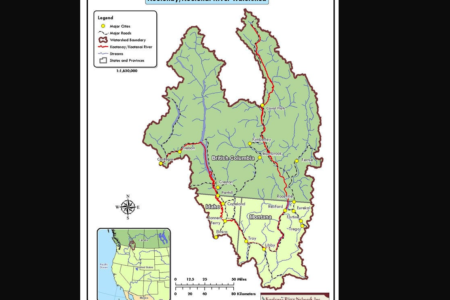Controversial tar sands pipeline moving forward despite heavy protest
By David A Gabel, ENN
The massive international pipeline, known as the Keystone XL pipeline, would connect Alberta’s booming tar sands to refineries in Texas and the Gulf Coast.
It would be the longest pipeline outside of Russia and China, and would carry North America’s largest oil deposit to the market. The project has sparked protests from environmental groups because large areas of boreal forests would be destroyed and sensitive habitats would be affected.
Also, protesters oppose the pipeline for reasons relating to global climate change and breaking our addiction to oil. The Keystone project has just passed a key hurdle by getting the go-ahead from the US State Department.
The tar sands of Alberta are believed to be the second largest deposit of petroleum in the world after Saudi Arabia. They have recently become accessible through technological improvements. The oil is essentially locked up in sand, making it a semi-solid oil known as bitumen.
The bitumen is mined from the ground rather than pumped, necessitating the destruction of whatever ecosystem is above it. The tar sands underlay an area approximately the size of Florida.
The pipeline would then send the tar sands south through the Great Plains of the United States. Many citizens of these states such as Nebraska are very worried about the potential for an environmental disaster caused by a spill. Worries are especially high following last year’s catastrophe in the Gulf of Mexico.
Protesters have been very active against the Keystone XL pipeline, demonstrating in Washington DC for over a week. So far, there have been nearly 400 arrests of people practicing civil disobedience.
Groups taking part in the protests include the Sierra Club and BOLD Nebraska, a group dedicated to protecting the unique ecology of the Sand Hills in Nebraska, through which the proposed pipeline would be built.
The United States State Department prepared an environmental impact statement and concluded that the owner of the pipeline, TransCanada, would take the required steps to reduce the risks of a spill which essentially gives it the green light.
However, critics are not satisfied, saying the impact statement falls short of answering key questions raised by other agencies like the EPA. The questions include how it will affect air quality, drinking water, and endangered species.
The approval from the State Department is only one hurdle the project needs to cross in order to move forward. Other federal and state government agencies still need to review it, it has to go through public hearings, and the President can still veto it.
However, a Presidential veto is highly unlikely considering the project would create thousands of jobs and greatly expand the nation’s access to oil from a friendly neighbor in a tough economic climate. It is likely protests will continue against the controversial pipeline, as their efforts are still capable of persuading other agencies to halt the project.
- Link to the State Department Environmental Impact Statement: http://www.keystonepipeline-xl.state.gov/clientsite/keystonexl.nsf?

























